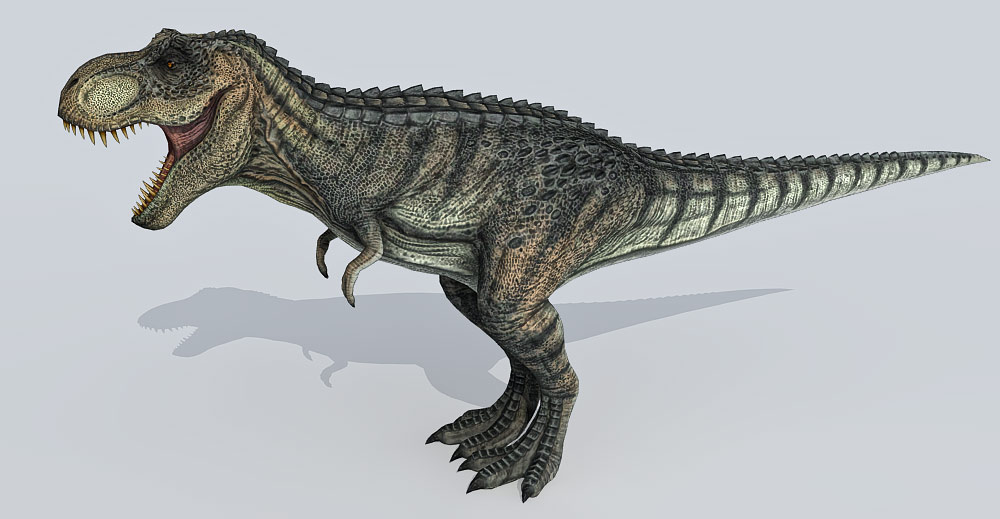Tyrannosaurus Rex, the “king of the dinosaurs,” has long captured the imagination of both scientists and the general public. Its formidable presence in Earth’s prehistoric era has been a subject of fascination and curiosity. In recent years, the integration of 3D technology has revolutionized the study of T-Rex, providing new insights into its biology and behavior.
Evolutionary Significance
The journey of T-Rex from its early evolutionary stages to the formidable apex predator is a testament to the wonders of evolution. Advancements in paleontological techniques, especially the application of 3D technology, have facilitated breakthroughs in understanding T-Rex’s adaptation to its environment.
The Fascination with T-Rex
Beyond the scientific realm, T-Rex holds a special place in popular culture, becoming an iconic symbol of dinosaurs. The allure of this majestic creature extends to movies, books, and various forms of media, further solidifying its status as a cultural phenomenon.
Advancements in 3D Technology
The advent of 3D scanning and modeling techniques has allowed scientists to create highly detailed virtual reconstructions of T-Rex skeletons. This technology offers a new dimension to paleontological research, enabling researchers to study the anatomy and structure of T-Rex with unprecedented accuracy.
Benefits in Paleontological Research
The use of 3D technology has significantly improved the precision of skeletal reconstructions, aiding scientists in creating more accurate representations of T-Rex. This breakthrough has not only enhanced our understanding of the creature’s physical characteristics but also provided insights into its biomechanics and behavior.
Museum Exhibits and Education
Museums worldwide have embraced 3D technology to enhance the visitor experience. Virtual exhibits featuring interactive 3D models of T-Rex allow audiences to engage with the past in a way never before possible. This technological integration has also become a valuable tool for educational outreach, bringing the wonders of paleontology to a broader audience.
Challenges and Controversies
However, the rise of 3D printing replicas raises ethical concerns, particularly regarding the potential impact on fossil preservation. Striking a balance between making T-Rex accessible to the public and preserving the integrity of fossils is an ongoing challenge in the scientific community.
Collaboration in Scientific Community
The collaborative nature of scientific research is amplified by the sharing of 3D models globally. Researchers from different corners of the world collaborate on projects, pooling their expertise to unlock new mysteries surrounding T-Rex and other dinosaur species.
Applications Beyond Paleontology
The applications of 3D technology extend beyond the realm of paleontology. Medical fields benefit from 3D printing techniques, contributing to advancements in surgeries and prosthetics. Moreover, industrial and technological sectors explore the potential of replicating nature’s designs for innovative solutions.
Perplexity in Unveiling the Past
Unraveling the complexities of T-Rex anatomy remains a perplexing yet thrilling challenge. The intricacies of its skeletal structure and the dynamics of its movement are areas where 3D technology plays a crucial role in providing detailed insights.
Burstiness in Technological Breakthroughs
The field of 3D technology experiences continuous bursts of innovation. The rapid growth in 3D printing capabilities and improvements in imaging technologies contribute to the dynamic landscape of virtual paleontology, propelling the field forward at an unprecedented pace.
Specificity in Scientific Accuracy
Despite the burst of technological breakthroughs, the emphasis on scientific accuracy remains paramount. 3D models must accurately represent the unique features of T-Rex, allowing researchers to rely on precise data for their studies and ensuring the integrity of scientific findings.
Contextualizing T-Rex in Modern Science
Integrating 3D data with findings from other scientific disciplines enhances our understanding of T-Rex’s role in Earth’s history. The collaboration between paleontologists, biologists, and geologists provides a holistic perspective, shedding light on the broader context of T-Rex in modern science.
Engaging the Curious Minds
The integration of 3D technology also opens avenues for public involvement in virtual paleontology. Citizen science initiatives encourage enthusiasts to contribute to ongoing research, fostering a sense of connection and shared exploration of our planet’s ancient past.
Conclusion
In conclusion, the marriage of Tyrannosaurus Rex and 3D technology has redefined the landscape of paleontological research. From museum exhibits to global collaborations, the impact of 3D technology on T-Rex studies is undeniable. As we continue to unravel the mysteries of this prehistoric giant, 3D technology stands as a beacon, guiding us through a virtual journey into the past.




